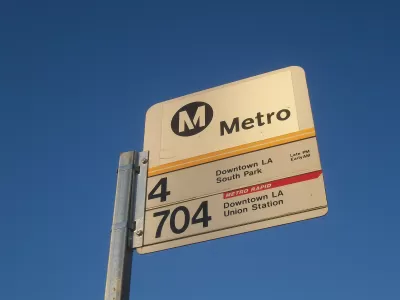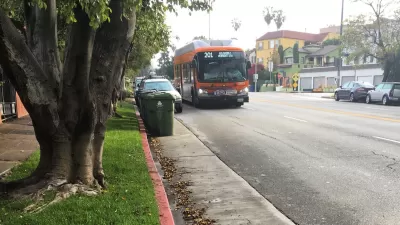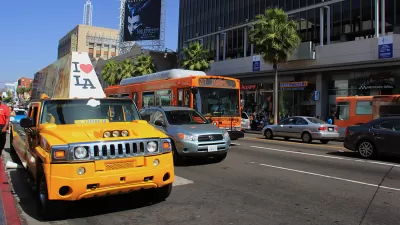Late last week, Los Angeles transit riders got a first peak at the proposed NextGen Bus Plan, a system redesign that promises to completely redefine transit access in the county.

Last Friday, the Los Angeles County Metropolitan Transportation Authority (Metro) released the first draft of its NextGen Bus Plan, first announced in 2017 with hopes of reversing rapidly plummeting ridership on the system.
"In a big step forward for Metro’s efforts to restructure its vast bus system, the agency today released a draft service plan that would greatly improve the frequency of buses across the Metro system," according to an article written by Steve Hymon for Metro's The Source.
The big ticket items of the proposed plan include the following benefits, as described by Hymon:
- Buses would arrive every five to 10 minutes for 83 percent of current riders compared to 49 percent today.
- The number of bus lines running every five to 10 minutes on weekdays would jump from 16 to 29 and from two to 14 on weekends.
- The number of Los Angeles County residents who could walk to bus lines running every five to 10 minutes would more than double from 900,000 currently to almost 2.2 million.
The model for the redesign follows the frequent grid made most famous in the United States by Houston in 2015. In addition to consolidating certain routes, the plan also proposes eliminating stops to speed up bus service, according to the article.
As noted by Hymon, the draft NextGen Bus Plan is expected to evolve after a public engagement process expected to launch in February and March (a schedule is already available).
"Later this month, Metro will also be releasing route-by-route changes and online tools that will better visualize what your bus ride would be like under the draft plan," according to Hymon.
FULL STORY: Frequent service plan released for NextGen Bus Plan

Alabama: Trump Terminates Settlements for Black Communities Harmed By Raw Sewage
Trump deemed the landmark civil rights agreement “illegal DEI and environmental justice policy.”

Study: Maui’s Plan to Convert Vacation Rentals to Long-Term Housing Could Cause Nearly $1 Billion Economic Loss
The plan would reduce visitor accommodation by 25% resulting in 1,900 jobs lost.

Why Should We Subsidize Public Transportation?
Many public transit agencies face financial stress due to rising costs, declining fare revenue, and declining subsidies. Transit advocates must provide a strong business case for increasing public transit funding.

Paris Bike Boom Leads to Steep Drop in Air Pollution
The French city’s air quality has improved dramatically in the past 20 years, coinciding with a growth in cycling.

Why Housing Costs More to Build in California Than in Texas
Hard costs like labor and materials combined with ‘soft’ costs such as permitting make building in the San Francisco Bay Area almost three times as costly as in Texas cities.

San Diego County Sees a Rise in Urban Coyotes
San Diego County experiences a rise in urban coyotes, as sightings become prevalent throughout its urban neighbourhoods and surrounding areas.
Urban Design for Planners 1: Software Tools
This six-course series explores essential urban design concepts using open source software and equips planners with the tools they need to participate fully in the urban design process.
Planning for Universal Design
Learn the tools for implementing Universal Design in planning regulations.
Smith Gee Studio
Alamo Area Metropolitan Planning Organization
City of Santa Clarita
Institute for Housing and Urban Development Studies (IHS)
City of Grandview
Harvard GSD Executive Education
Toledo-Lucas County Plan Commissions
Salt Lake City
NYU Wagner Graduate School of Public Service





























